Pre-order Shin Megami Tensei III: Nocturne HD Remaster
Shin Megami Tensei III: Nocturne was pretty much the game that got the Shin Megami Tensei franchise off the ground overseas. While earlier attempts were made, they were often plagued by inexplicable localizations (Persona: Revelations) or didn't showcase the franchise's strong points (Demikids). Nocturne had the advantage of being one of the best SMT titles ever made, and its success was the first step in a long road that leads us to the Persona 5s of today. It's no surprise that fans are pretty excited about an HD port of the PS2 classic, and we got some hands-on time with Shin Megami Tensei III: Nocturne HD Remaster.
Nocturne HD Remaster is set in modern times, around 2003 or so. You play as an average Japanese student who is supposed to meet his teacher at a mysterious hospital. Along with his friends, he ventures there just in time for the world to end. A mysterious event known as the Conception occurs, obliterating everything outside of Tokyo and turning Tokyo into a spherical world. The hero only survives by being granted a power that turns him into a half-human/half-demon known as the Demi-fiend. Now the player must travel through Tokyo as the Demi-fiend to figure out what the mysterious event means for the world.
There are two separate versions of Nocturne available, based around which guest character shows up. In the default version of the game, Raidou Kuzunoha of the PS2 Raidou Kuzunoha titles shows up as an antagonist-slash-ally of the Demifiend. In the special Maniax DLC, which comes free with the digital deluxe edition, Dante of Devil May Cry fame appears instead. From what we heard, this is largely for flavor rather than a drastic change, but it's a fun twist to bring Dante into a game about demon slaying. (The original PS2 release featured him, so nostalgia would err on the side of that.)
As a mainline Shin Megami Tensei game, Nocturne is based around demon training rather than set characters. Your main character, the Demi-fiend, is the only constant in battle. To fill out the rest of the team, you'll need to negotiate with the demonic enemies that you're fighting. Negotiation is pretty similar to the later games in the series: You answer some questions, offer some items, and hope that luck and the phase of the moon are in your favor, so they actually decide to join.
Something Nocturne does that you don't see in the more recent games is Evolution — in the Pokémon sense. If you get a demon to a certain level, they may transform into a new and stronger form. A good example is the Pixie, which is your first demon. With a small handful of levels under her belt, she'll transform into High Pixie with improved stats. It's a nice way to keep demons relevant for longer and encourage you to stick with one for a while.
Nocturne introduced the Press Turn combat system, which has been the inspiration for combat in pretty much every game in the franchise since, right up to Persona 5. For each character in your party, you gain one Press Turn. Taking an action uses up one Press Turn. However, if you strike an enemy weakness or make a critical hit, you gain an additional turn, so you can have up to four bonus actions in a single turn. The bonus actions can't be further chained. You can also pass, which converts your turn into a bonus action turn, but that is a double-edged sword. If an enemy nullifies or dodges your attack, you can lose two turns, and if they repel or absorb it, then you lose all of your remaining turns.
The same rules apply to the enemy. If you're having trouble with a difficult foe, bringing in characters who nullify or absorb their attacks can quash their damage output. Likewise, using spells to boost your Dodge chances is a huge boon. This makes planning your team very important because even a weaker demon can be useful if its elemental resistances match up with a particularly tough boss.
Thankfully, the Demi-fiend is customizable. His power comes from Magatama, which are stones that he can use to adjust his stats, elemental strengths and weaknesses, and the skills he'll learn upon leveling up. Magatama can be switched at any time outside of battle, so you can be assured that you'll be prepared for a boss fight. Skills are only learned upon leveling up when the Magatama "shakes" on the status screen to let you know that particular one can learn a new skill. You also can customize your Demi-fiend's stats, allowing you to gear him as a powerful physical fighter or versatile mage.
Nocturne has a reputation for being one of the harder games in the series, and the Press Turn system is a big part of that. Mistakes are dangerous even early in the game. The first boss has a ton of ice attacks, and if you bring the ice-vulnerable Hua Po into battle, they may get an additional turn every round, which can snowball against you very quickly. Thankfully, the game will include a new Merciful mode that weakens enemies and allows players to explore the story. For those who enjoy a bit of pain in their video games, there's a punishing Hard mode that gives enemies even more chances to wreck your day. A welcome relief from the PS2 days is that you can now choose to suspend your game when you need a break, rather than having to drag yourself to the next save point before turning off the power.
Visually, the game hasn't changed much. The graphics have been given an HD makeover, but they're still noticeably PS2-era. The fantastic art style of Kazuma Kaneko gives it a timeless look, especially given the game's excellent atmosphere. New to the HD port is full voice acting in both Japanese and English. I was surprised to find how much voice acting changed my views of some of the characters. The script has been cleaned up, which contributes to it, but just hearing the voices sells some of the dialogue. The game still features fully renameable characters, but the script largely gets around that by putting something generic in place, so the dialogue flows more smoothly. (Things along the lines of, "Our other friend went to find our teacher.") It's a nice addition that adds personality to the game, but if you want to play in the original style, you can mute all voice acting without a hitch.
All in all, Shin Megami Tensei III: Nocturne HD Remaster is shaping up to be an extremely solid port of one of the best titles in the franchise's history. The engaging story, unique visual style, and a combat system that has held up for two decades combine to create a game that shows the absolute best of SMT. Barring any serious issues in the late game, it seems like Nocturne HD will be a must-have for fans of the franchise. We'll all get a chance to see how the mysterious events play out when the game hits this May for the Nintendo Switch, PC and PS4.
More articles about Shin Megami Tensei III Nocturne HD Remaster


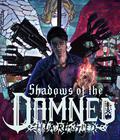
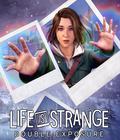
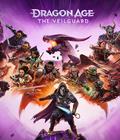
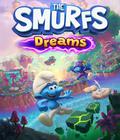
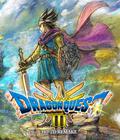
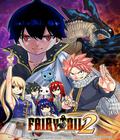
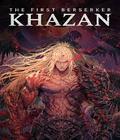

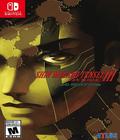 Shin Megami Tensei III Nocturne HD Remaster is based on the special edition "director's cut" version of the game that was released in Japan earlier this year, which features an appearance from Devil May Cry's Dante.
Shin Megami Tensei III Nocturne HD Remaster is based on the special edition "director's cut" version of the game that was released in Japan earlier this year, which features an appearance from Devil May Cry's Dante. 




























